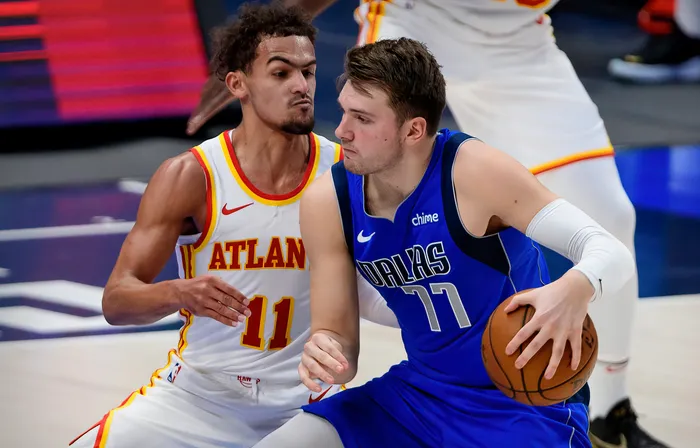Same-game parlays (SGPs) have become a popular way to bet on NBA games. They offer the thrill of combining multiple bets from one matchup for higher payouts. But without a strategy, they can quickly turn into losing wagers. A well-built SGP requires careful analysis, risk management, and an understanding of player and team trends. Here’s how to build a winning SGP with a realistic chance of success.
The key to a successful SGP is selecting bets that have a logical connection. When one event increases the likelihood of another happening, the parlay gains value. For example, if a team plays at a fast pace, betting on both the over and a player’s points total makes sense. Similarly, if a star player is out, teammates may take more shots, making their scoring props appealing.
Avoid stacking conflicting bets. A parlay combining an underdog’s win with an opposing star’s points over is risky unless there’s a clear matchup advantage. Each selection should support the overall game script.
Monitor Injury Reports and Line Movements
Sportsbooks like FanDuel adjust their odds in real time based on injury reports, betting trends, and other key factors. When a star player is ruled out, point spreads shift, and player props are recalibrated to reflect new expectations. Catching this information early can provide an edge before lines move too far.
For example, if a team’s leading scorer is sidelined, sportsbooks may lower the total points line while boosting the scoring props for secondary players. On FanDuel, you might see a role player’s points line jump from 12.5 to 15.5 within minutes of breaking news. Betting on these props before the market fully reacts can create significant value.
Tracking line movements also reveals where sharp money is going. If a player’s rebound prop moves from 7.5 to 9.5, waiting too long to bet the over might mean missing the best number. Staying updated on injuries, odds shifts, and FanDuel’s market adjustments helps bettors find value before lines settle.
Analyze Pace and Matchups
Game tempo significantly affects player stats. Faster teams generate more possessions, increasing scoring opportunities, while slower teams create fewer chances. Before placing an SGP, compare each team’s pace ranking. Target games where both teams play fast for higher-scoring potential.
Defensive matchups also matter. If an elite rim protector faces a player who relies on inside scoring, taking the under on that player’s points may be a smart move. On the other hand, if a weak perimeter defender is guarding a high-volume shooter, the over on three-pointers could hold value.
Prioritize Consistency Over Extreme Outcomes
Betting on consistency rather than extreme outcomes is key to long-term success in same-game parlays. Instead of relying on a bench player to explode for an unlikely scoring night, focus on star players with steady production and well-defined roles.
One of the best ways to identify reliable bets is through in-depth NBA player stats analysis. Examining metrics like usage rate, shot attempts per game, and efficiency against specific defensive matchups helps in making informed decisions. A player averaging 25 points per game with a high usage rate is a safer bet than someone whose scoring depends on unpredictable shooting streaks.
Similarly, avoid extreme betting angles. A parlay stacked with overs assumes everything goes right, while a set of unders expects a game full of inefficiency.
Limit Legs and Manage Risk: A Smarter Approach to SGPs
One of the biggest mistakes bettors make when trying to build a winning SGP is adding too many legs. While it’s tempting to chase high payouts with long-shot parlays, every additional selection drastically reduces the probability of a successful bet. Instead of aiming for unrealistic jackpot wins, a more disciplined approach is focusing on two to three legs that have strong correlations.
Why Too Many Legs Can Hurt Your SGP
The appeal of same-game parlays (SGPs) lies in their ability to stack multiple bets within the same event, leading to higher potential payouts. However, each added leg introduces more risk, making it harder to cash in. A single unpredictable play—a star player underperforming, an unexpected injury, or a sudden change in-game pace—can derail your entire bet.
For example, imagine betting on a quarterback to throw for 250+ yards, his top receiver to surpass 75 yards, and the game to go over 48.5 points. These picks align well, as a pass-heavy game script would likely push all three to hit. But when you add multiple extra props—like a secondary receiver scoring or a defense failing to register a sack—the chances of every bet landing diminish significantly.
Instead of spreading risk across too many variables, bettors should focus on high-probability selections that complement each other. The key to building a winning SGP is constructing a bet where each leg logically supports the others rather than piling on additional variables for the sake of a bigger payout.
Managing Bankroll & Risk for Long-Term Profitability
Another critical component of a smart betting strategy is proper bankroll management. Many bettors fall into the trap of risking too much on high-variance SGPs, hoping for a big hit. While it’s understandable to want a large payout, bankroll depletion happens quickly when bettors allocate too much money to parlays with a low hit rate.
A safer strategy is to limit SGPs to a small percentage of your total betting activity—no more than 5-10% of your bankroll per wager. This ensures that even if a parlay loses, it won’t significantly impact your overall financial position. Treating SGPs as a supplement to traditional straight bets and spreads rather than a primary strategy helps maintain longevity in betting.
Building a Smarter Same-Game Parlay: Keys to Success
A well-structured same-game parlay requires more than just picking a few random bets and hoping for the best. To truly build a winning SGP, bettors must focus on correlations, game flow, and informed decision-making. Here’s how to increase your chances of long-term success:
Correlated bets are selections that have a logical relationship with one another. For example:
- If you bet on Patrick Mahomes to throw for 300+ yards, pairing it with Travis Kelce over 80+ receiving yards makes sense because Kelce is a primary target.
- If you bet on a team to cover the spread, consider adding their quarterback to exceed his passing yards line, assuming a strong offensive performance is required to win.
- If a game is expected to be high-scoring (over 52 points), choosing multiple offensive player props to hit their overs follows a reasonable pattern.
Avoid combining unrelated bets that don’t align with a specific game script. Betting on a QB’s passing over while also taking the under on total points is an example of a conflict that can lower your chances of winning.
2. Factor in Pace, Matchups & Weather Conditions
Not all games are created equal. When structuring your SGP, consider the following:
- Game Pace: Faster-paced teams lead to more plays and higher scoring potential. Slow, run-heavy teams create fewer opportunities for overs.
- Defensive Matchups: A team with a weak secondary is more likely to give up big passing performances. A strong rush defense might limit a running back’s effectiveness.
- Weather Conditions: Rain, wind, and cold temperatures can drastically affect passing and kicking props. Betting on deep passing yards in heavy wind is a risky move.
By considering these external factors, you can build a winning SGP that aligns with real-world conditions rather than relying purely on player performance.
3. Stay Informed on Injury News & Line Movements
Injuries are one of the biggest factors in sports betting. A last-minute scratch can completely change a game script, turning what once looked like a strong bet into a risky proposition. Before finalizing an SGP, check injury reports, late scratches, and betting line movements.
For example, if a star wide receiver is ruled out, his backup might see increased targets. If a key defensive player is missing, the opposing offense could have an easier path to success. Betting without considering injury news is a major mistake.
4. Prioritize Consistency Over Extreme Outcomes
Many bettors fall into the trap of choosing long-shot props in their SGPs, expecting major upsets or breakout performances. While these bets have high payouts, they come with a much lower probability of hitting.
Instead of relying on extreme outcomes, focus on consistent performers:
- Top quarterbacks consistently hitting their passing yards prop.
- Star running backs going over their rushing totals against weak run defenses.
- Receivers getting their usual number of targets rather than betting on unexpected TD scorers.
While long shots can sometimes hit, they should never be the foundation of an SGP strategy. To build a winning SGP, bettors need to balance safe, correlated selections with occasional high-upside plays that make sense within the game script.
Sustainable Betting for Long-Term Success
Same-game parlays can be an exciting way to wager, but they should be approached strategically rather than as reckless lottery tickets. By limiting legs, managing risk, targeting correlated bets, and staying informed on key factors, bettors can improve their chances of long-term profitability.
If you’re serious about trying to build a winning SGP, the key is smart selections, not massive payouts. A well-researched, disciplined approach will always outperform high-risk, low-probability parlays in the long run.






